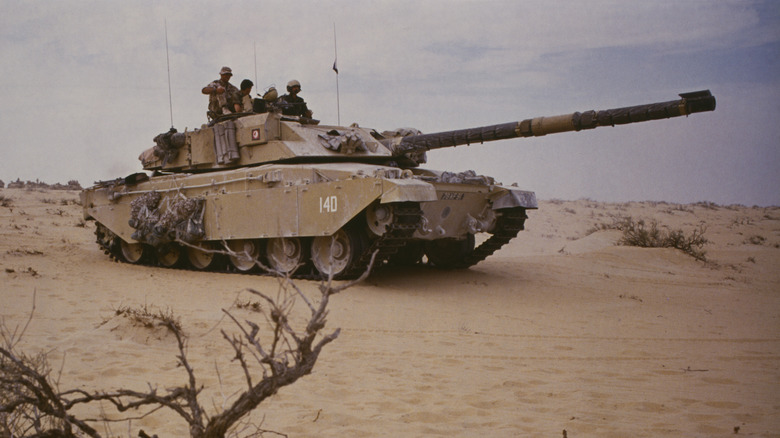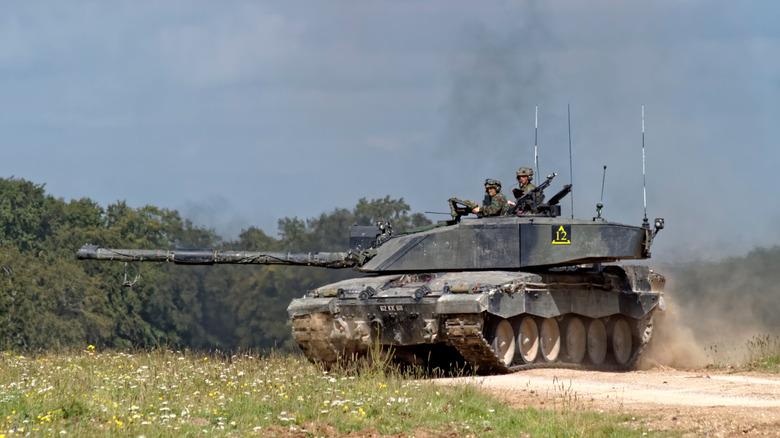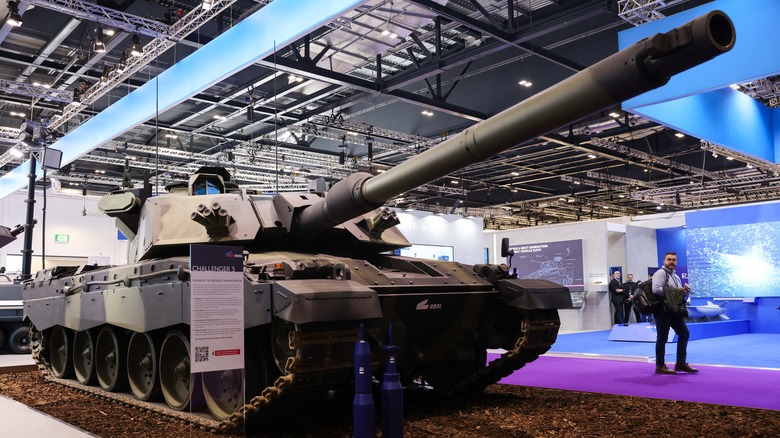How The British Challenger Tank Has Evolved Over 40 Years
By the early 80s, Britain's main tank, the Chieftan, became a bit long in the tooth. Especially so, after the Russians had upgraded their tanks and nearly every super power had new hardware on the battlefield. Britain knew it was time for an upgrade, so in 1983, the Challenger Tank was unveiled. It was compared with the M1 Abrams, which some say is one of the best tanks ever made. The Challenger had a significantly upgraded main gun compared to the Chieftan, and it also had far superior armor. It became famous for its reliability and its hydropneumatic suspension system that made traveling across tough terrain a much smoother experience.
What's amazing about the first version of the Challenger is that it holds the record for the furthest sucessful tank kill ever carried out. During the Gulf War, the Challenger was able to blow up an Iraqi tank from a distance of nearly 2.5 miles away. When the fight got up close and personal, it also had two 7.62 mm machine guns, with one by the main gun and the other mounted on the turret. They carried 4,000 rounds on board for those guns, which is an extremely high number when compared to loadouts from the most legendary tanks of WWII. But that tells you this modern tank was meant to act as both a long-range weapon that could also remain powerful in the thick of the fight.
This first Challenger remained in production until 1989, when Britain knew it needed an answer to Russia's latest tanks. It brought about the upgrade to the Challenger II. Read on to see how the Challenger has evolved throughout its time of service.
Challenger 2
The first Challenger served until 1998 when the Challenger 2 came along. With the unveiling of this next iteration, it was immediately recognized as being one of the more well-armored tanks in the world. It sports composite "Dorchester" armor, giving the soldiers inside over 55-inches of steel and ceramic protection from a hit to the front of the tank. It also has a max speed of 37 mph on the road and 25mph offroad so it is comparatively agile with most tanks around the world. Though the Challenger 1 currently still holds the record for the longest distance tank kill at nearly 2.5 miles away, the Challenger 2 still has a hefty range of two miles.
In January of 2023, British Prime Minister Rishi Sunak announced his government was sending 14 Challenger 2 tanks to Ukraine to aid in its fight against Russia. The British army helped train Ukrainian soldiers in how to operate the Challenger 2 over several weeks. In January of this year, only one of the Challenger 2 tanks had been lost in the conflict, and the Ukrainians have come up with new ways to safeguard against similar attacks.
Challenger 3
Though it has not been deployed yet, the Challenger 3 by Rheinmetall and BAE Systems promises to be a major upgrade over the Challenger 2. It comes outfitted with a 120 mm/L55A1 smoothbore main gun, which boasts significantly more power than its predecessor. Earlier versions have featured rifled barrels, but this smoothbore main gun enables the tank to use global munitions, giving it a much larger supply of potential ammo. It offers an advanced control system that can identify and track multiple enemy targets and can also queue up targets so commanders can plan their attacks. It's also outfitted with long-range thermal imaging cameras to sense heat signatures at long distances.
The most promising feature about the Challenger 3 (after all, it's not here yet) is the upgraded engine and suspension. The engine will supposedly get the Challenger 3 up to speeds of over 60 mph. The suspension is an improvement over the Challenger 2 making the ride much smoother increasing accuracy when it needs to hit targets on the move.
The first batch of Challenger 3 tanks won't be available until 2027.


